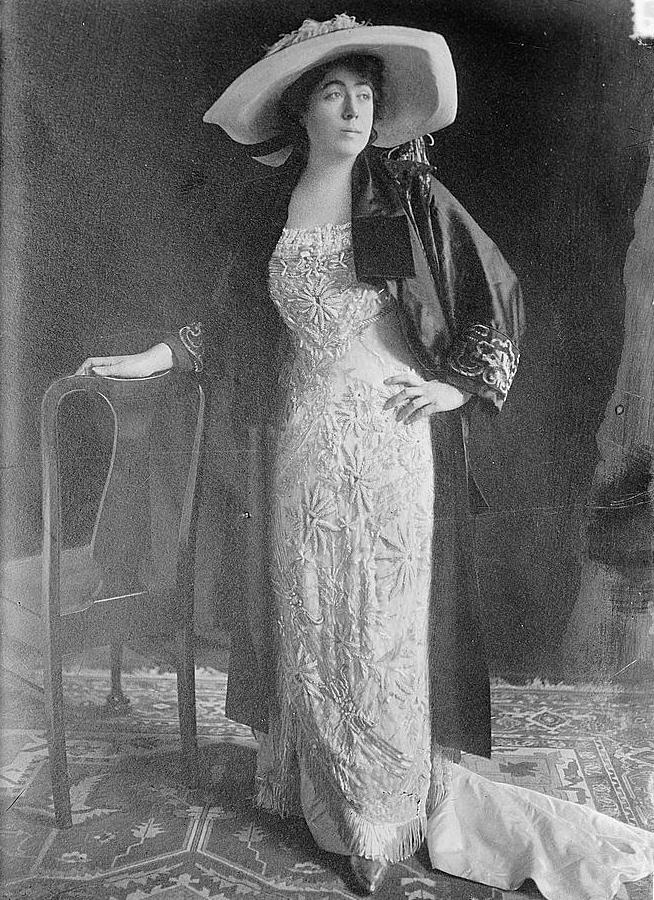During the 1890s, Denver was known as the Queen City of the Plains. In hopes of becoming comparable to the likes of Chicago or San Francisco, Denver began to establish itself as both an important thoroughfare and place to live. There was a population boom, and a building boom as well. Thousands were moving to the growing city, including JJ and Margaret Brown. They along with their two children moved to Denver in 1894.

Denver Skyline, 1898
The Brown’s new residence was elegant but modest. The Queen Anne style home located at 1340 Pennsylvania Avenue was located in the popular and up-and-coming Capitol Hill neighborhood. Built by notable Denver architect William Lang, the three-story house had four fireplaces, two large lion statues guarding the front of the house, and boasted new and modern technologies, including electricity, central heating, indoor plumbing, and a hand-crank telephone. There was also a carriage house at the back of the property. This, of course, is the Molly Brown House Museum today.
Despite the popular belief that Margaret and JJ were shunned by Denver’s high society, they were very much part of it. In fact, from 1894 to the early 1920s, “the Browns took up more space in Denver’s society pages than nearly any other Denver family” (Iverson, 107). As Denver grew, high society began to thrive, and the Browns were very active in the world of Denver’s upper class.
JJ and Margaret would have enjoyed luncheons, parties, and other social events on a regular basis. The infamous Brown Palace Hotel on 17th street was completed in 1892, and it was a popular place for tea parties and luncheons to be held. The Browns were regular visitors. Margaret also held numerous fundraisers in the hotel for some of her favorite causes, including for the Humane Society and select Catholic charities, among others. It is important to note that there is no connection between Margaret Brown and Henry Cordes Brown, the hotel’s founder.
The Browns often attended the theatre and the opera as well. They regularly received visitors and hosted guests at their home in Capitol Hill and, like several other upper class families in Denver, the Browns also had a country home in present day Lakewood, Colorado, where they hosted and entertained guests. Those attending these country retreats often considered their visit to the Brown’s house a ‘highlight’ of the summer season (Iverson, 118).

Margaret Brown
Both JJ and Margaret also played prominent roles in Denver’s business and political circles. JJ owned and worked at a mine management business, and Margaret was often busy either studying humanities and learning new languages, or advocating for several political causes. She championed labor reform, women’s suffrage, animal rights, and worked to help establish a juvenile justice system. The new Cathedral Basilica of the Immaculate Conception on Logan and Colfax Avenue was being built to serve the Denver community, and Margaret Brown was instrumental in raising money for its completion.
After surviving the sinking of the Titanic in 1912, Margaret Brown was well received by the city. In an interview conducted at the Brown Palace, Margaret is recorded as saying, “It’s the Brown luck. I’m unsinkable!” when asked how she managed to survive that fateful night.
JJ and especially Margaret led very active lives during the years they lived in Denver, and they made their mark on the city in many ways. It wouldn’t be until 1932 that the Brown house at 1340 Pennsylvania Avenue would be sold to new owners. Today the house has been restored to look how it did when the Browns lived there at the turn of the 20th century.
Written by Education Intern, Brooke Traylor
Bibliography
Faulkner, Debra. Ladies of the Brown: A Women’s History of Denver’s Most Elegant Hotel. Charleston, SC: The History Press, 2010.
Iversen, Kristen. Molly Brown: Unraveling the Myth. Boulder, CO: Johnson Books, 1999.
